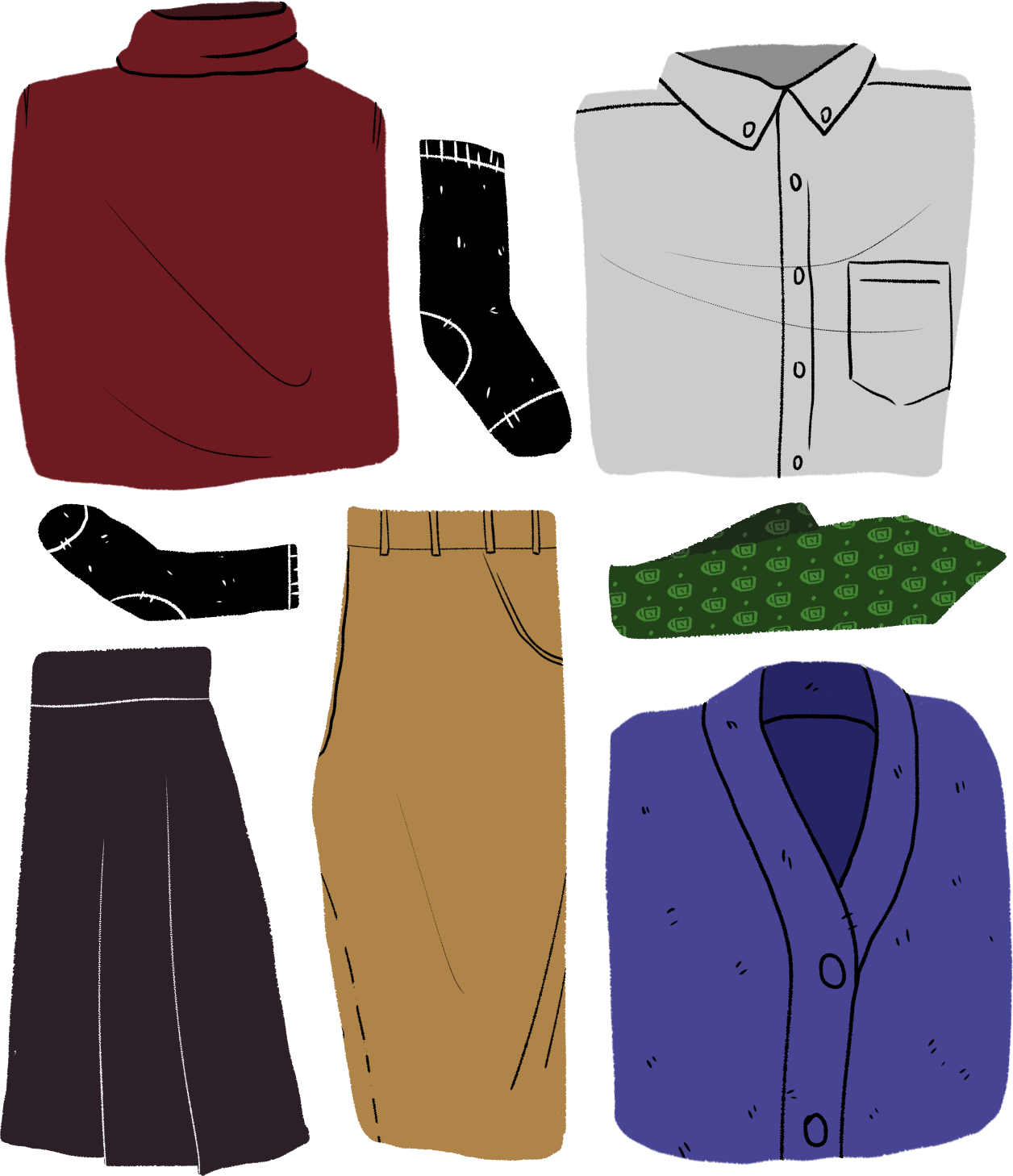This fall, Assistant Head of School for Student Life Amie Creagh invited the student body to join in discussions on possible changes to Deerfield’s dress code, one of its oldest traditions. Ms. Creagh formed a committee of students that is currently planning to pilot several revised versions of a dress code in the spring and gauge their impact on the student body.
Deerfield has debated the possibility of changing its dress code for many years. One commonly discussed aspect has been the inconsistency between boys’ and girls’ Academic Dress, the clothes students wear each school day.

Head of School Margarita Curtis explained, “I have felt that there is a bit of a dichotomy here. The boys look very professional, and it’s easy — the boys’ dress code is very clear and standardized. The girls’ dress code leaves itself more open to interpretation.”
In the Deerfield handbook, girls’ Academic dress code is currently described as follows:
[Girls may wear] pants/skirt/shorts, shirt (visible)—with or without a collar—and sweater or sport coat. Denim, fleece, and t-shirts are not permitted within Academic Dress. Dresses, skirts, and shorts—including rompers—must be hemmed within four inches of the center of the kneecap. Attire should not reveal the buttocks, midriff, or chest.
Expressing her opinion, Sophie Opler ’18, a member of the revision committe, said, “I initially became involved in the conversation…to address the ambiguity within the definition of ‘female class dress’. It is often less clear as to whether or not a female student is in class dress, in comparison to male students who can be called out in a second (i.e. their shirt is untucked, they’re not wearing a tie, etc.).”
However, many do believe that the dress code as it is currently written is clear enough, yet, students are simply not following the guidelines.
When the prospect of changing Academic Dress was brought up at a board meeting in late October, Dr. Curtis explained, “there was considerable concern” on the part of many on the Board of Trustees, especially considering making changes to the boys’ dress code. While there are still plans for a piloted dress code, these will mostly revolve around changes to the girls’ dress code. Permanent changes in Academic Dress are currently unlikely.
“This is not a detailed analysis,” Dr. Curtis clarified. “This has not been a comprehensive conversation. It hasn’t even been brought to the whole board. They were just reacting to what they had read in the report — they want to preserve for the time being, something that feels very distinctive.”
Parents and board members alike believe that Deerfield’s dress code is a special part of its identity. While some students may criticize the dress code, many also see it as a distinctive element of Deerfield that is important not only to current students, but to alumni and future students as well.
“[Deerfield’s dress code] is a huge selling point on why Deerfield is special,” Ollie Hollo ’18 remarked.
“Issues of institutional identity or distinctiveness are incredibly critical to our admissions and to our alumni… When you’re talking about issues of institutional identity, I think it’s very important that you keep the Board informed,” Dr. Curtis added.
Another common concern has been that Deerfield’s gender-binary dress code is not inclusive of gender fluid students. Ms. Creagh and her dress code committee hope to pilot two dress codes in April, one of which will likely be gender-neutral.
“We are all about making every child that comes to Deerfield feel comfortable, welcome, and appreciated.” Dr. Curtis affirmed.
Dr. Curtis invited interested students to attend a Student Life Committee luncheon in April, during which board members interact and hear directly from students.
Dr. Curtis explained, “They are open to hearing a wide array of students. We would like to hear from different opinion groups — those who think it should change, those who think it should stay the same, and everything in between.”

